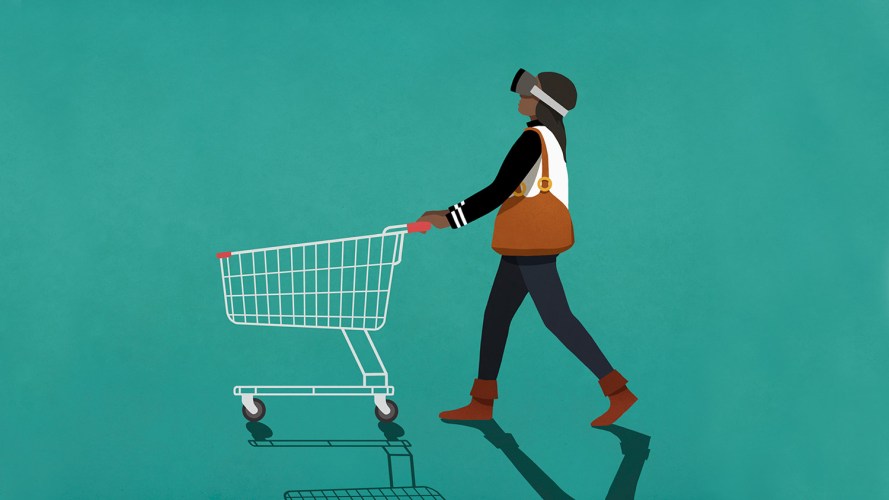3 Ways Generative AI Will Help Marketers Connect With Customers
3 min read


The holiday shopping season may be a few months away, but marketers are already planning for it. And this season, it’s all about rewarding existing customers for their loyalty with personalized offers that make them feel special.
For the last few years, we’ve seen consumers move away from their favorite brands, first due to availability, then price. In fact, 71% of consumers admit they’ve switched brands in search of better deals. In this challenging economy, costs to acquire new customers are rising while acquisition budgets are shrinking. That means your best bet for winning the holiday season is to focus your retail data strategy on creating meaningful, memorable, and frictionless interactions with your existing loyal customers.
How can you make sure shoppers turn to you first and keep coming back? Personalize everything, from product offerings and promotional savings to superior service and quick-and-easy returns. Make every shopper feel like they’re your number one, and they’ll do the same for you.
Learn to use data and AI to create magical retail experiences.



Creating personalized experiences based on collected customer data is increasingly important in retail marketing. Two thirds of consumers expect companies to understand their needs and expectations. Despite this, only 32% of retail executives say they can turn profile information, purchase history, and service interactions into tailored experiences that make shoppers feel like VIPs. To stay profitable this holiday season, retailers must inspire budget-conscious customers to shop. And to do that, they need to prove they understand what their customers want.
First-party data helps you tailor offers and messages to your customers’ interests. The payoff is huge: 78% of consumers say personalized email and other messages make them more likely to repurchase in the future. However, simply accumulating huge quantities of data isn’t enough. Being able to find that data and put it into action, at the right moment, can elevate every holiday shopper’s journey.
On average, consumers experience nine unique touchpoints before making a purchase. Don’t make them start from scratch every time. When you use data to help them pick up where they last left off, you make shopping easier. So, create unified shopper profiles that track attributes, preferences, shopping history, and more — in real time.
When consumer data is immediately accessible across your entire organization, on a single platform, you can create a seamless, efficient, and relevant interaction every time a customer reaches out, regardless of context, location, device, or issue. Then you can give them exactly what they want, exactly when they need it. That makes a lasting impression on a busy holiday shopper that keeps them loyal year-round.
To level-up your retail data strategy this holiday season, follow these four tips:
Not only are loyalty programs an effective way to gather zero- and first-party data, but members are often your most valuable customers. To drive revenue this holiday season, offer exclusive perks, so members think of you first when checking their lists twice. Make sure your loyalty program delivers the best value exchange possible, offering rewards that make shoppers feel they’re getting more for their money.
For example, give loyal customers the VIP treatment by providing early access to products and sales, faster shipping, free gift wrapping, convenient return options, no-charge alterations, and skip-the-line entry. These extras can make all the difference to budget-conscious holiday shoppers who make purchase decisions based on price.
Also, don’t overlook the intrinsic value of the VIP experience. That’s especially important for millennial and Gen Z shoppers: They value exclusive access to limited-edition products and experiences nearly twice as much as Gen Xers and Baby Boomers do.
Busy holiday shoppers don’t have time to waste. They don’t want to explain an online promotion to a store associate or make an extra trip to the post office because they can’t return a purchase in person. The bottom line? Your customers expect you to unite physical and digital interactions.
Store associates have taken on expanded roles, often acting as personal stylists, fulfillment experts, and service agents. Give them access to customer data and interactions including sales, ecommerce, marketing, and service. Unifying all this information on a shared customer data platform gives store associates a 360-degree view into every customer as an individual. This makes face-to-face encounters personalized, consistent, and on-brand, as well as efficient, informative, and productive.
With access to customer data on mobile devices, store associates can quickly answer questions about product availability, locate merchandise, place orders, track deliveries, and manage returns. They can also connect with other store employees across locations and regions to share ideas, find products, and build community, which can help them assist in-store customers when the items they’re seeking are out of stock. This may boost digital sales as well: We predict 60% of digital sales this year will be influenced by physical stores and associates, regardless of where demand is generated or fulfilled.
Holiday shoppers are inundated with emails, texts, app notifications, and social media advertising. Your retail data strategy needs to capture their attention with intelligent messaging that’s personalized to their needs and interests. You need to use your data to catch the attention of an in-store shopper at the moment of decision making.
Generative AI, a human-prompted technology — trained on your own trusted CRM platform — gathers customer data and uses it to create something new. For marketing teams, generative AI makes it easier and more efficient to design and automate personalized customer journeys with content that’s also optimized for search.
With generative AI, you can:
Combined with real-time dashboards at corporate headquarters, your call center, and in every store location, you can promote products based on a shopper’s history and suggest new products they may enjoy, right now, in the moment. For example, you can text customers special holiday offers on products they’ve browsed online while wandering your aisles, and then promote complementary products that just landed on your shelves.

3 min read

6 min read
To grow margin in a challenging economy, you need to do more than tailor communications to customer preferences. Once your retail data strategy captures their attention at the right moment, use customer data to make it easy to buy.
Use data from existing customers to create:
While the state of the economy remains uncertain, there’s one thing retailers can be sure of: Your best bet for holiday success is to shower your loyal customers with care and attention. This starts with understanding what they need at exactly the right moment.
Look at their buying history, preferences, and interactions over the course of their customer journey, and then create innovative ways to deliver real-time, relevant and memorable experiences. That’s how you keep customers loyal, during the holidays and all year long.
See how shoppers spend during surge shopping moments.




Get the latest articles in your inbox.


